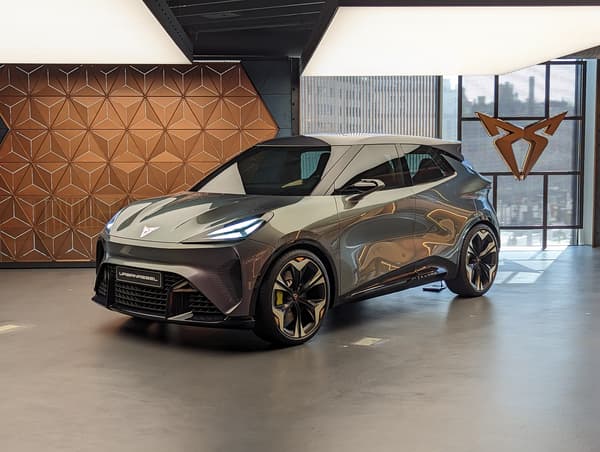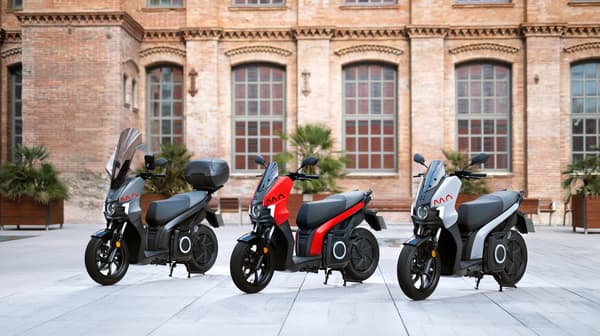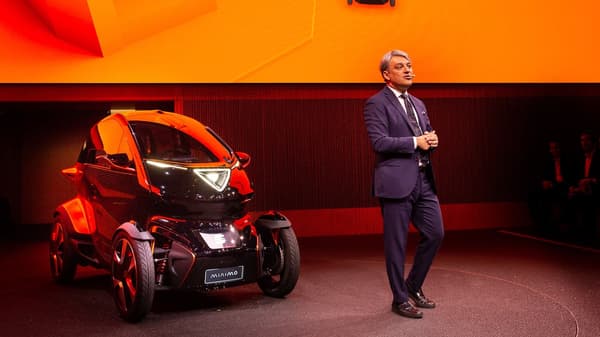Fun atmosphere at “Casa Seat”, the showroom-café located in the center of Barcelona and the place chosen to announce the 2022 results of the Spanish group. After two years of covid, the recovery is underway with a turnover of 10,513 million euros last year, 1,257 million more, and a profit after taxes of 68 million euros, which returns to the green after a loss of 256 million in 2021.
The entity “Seat SA” once again makes a positive contribution to the results of the Volkswagen group, its owner since the late 1980s. Cupra seems to take center stage during this event. Cupra, the manufacturer’s premium label, morphed into its own brand just 5 years ago.
Three new vehicles to come… exclusively Cupra models: with the trio Tavascan (100% electric compact SUV) by 2024, Terramar (hybrid compact SUV) and a 100% electric city car, cousin of Volkswagen’s ID.2, by 2025 .
For its part, Seat still does not have a 100% electric vehicle in its range (Cupra offers the Born, cousin of the Volkswagen ID.3), none planned (nor news for all engines combined), as well as a zero emissions date. (planned for 2030 on Cupra, 2035 on Volkswagen).

It must be said that the premium brand, which prefers to call itself an “unconventional brand” and which was launched by the current head of Renault, Luca de Meo, in 2018, is beginning to reap the rewards of this daring bet.
However, the context was still difficult in 2022, with the war in Ukraine, the energy crisis and the aftermath of the semiconductor crisis. And at a time of arbitration within the Volkswagen group, it is clearly not Seat that has been favored in the allocation of essential components to ensure deliveries. Unlike Audi and Cupra, which achieve better margins.
A good example of this situation is a slide from the results presentation in which you can read that sales of the Seat, Cupra and Audi trio fell by 4% last year, from 474,000 to 455,000 units. But, if in this mix, Audi remained stable at 13%, Cupra’s share went from 17% to 31%… necessarily to the detriment of Seat. Figures not presented, but that can be easily deduced, together Seat / Cupra, the participation of the latter has increased from 20% in 2021 to 42% in 2022.
A power increase that is reflected in the average price of a vehicle in Seat/Cupra. From 14,450 euros in 2018, it increased by 547O euros (+38%) in five years to reach a maximum of 19,920 euros in 2022.
Something also to be less surprised when the head of the two brands, the British Wayne Griffiths, predicts that Cupra will represent more than half of sales this year. Or less when he declares:
“I have said it many times, the future is electric and for our company that means that the future is Cupra.”
With such a context and statements that leave little doubt about the priority given to Cupra in the coming years, it is the fate of the Seat brand that raises questions.
What future for the Seat brand?
In the short term, the new European anti-pollution regulations, Euro 7, which must be applied from 2025, tightening the requirements in terms of CO2 emissions, would potentially condemn the brand’s bestseller, the small SUV Arona. A potential catastrophe for such non-hybrid thermal models and related work, warns Wayne Griffiths, referring to “factory closures if the text is adopted as is.”
Without reaching this hasty end, the current range of Seat seems, despite everything, doomed to gradually become extinct. And if delivery times seem to have improved lately, a Leon still suffers from a lack of components, compared to the Volkswagen Golf… and the Cupra Leon.
Finally, the Seat factory in Martorell will assemble three electric vehicles from 2025 (see box): the Volkswagen ID.2, the Cupra UrbanRebel and the electric city car from… Skoda. The Czech brand of the VW group, which has an electrical product plan, thus seems much better armed than the Spanish one.

A situation that would finally push Seat to act in its transformation into a “player of the new mobility”. A name that already covers a certain reality with “Seat Mó”, which already sells electric scooters and scooters and soon a small two-seater vehicle, Citroën Ami style.
A future as a micromobility provider that can make you smile, but one that can also be found at Renault with Mobilize. This dedicated subsidiary, in particular, is also due to launch a successor to the Twizy, the “Duo”. The opportunity to remember that it was Luca de Meo who presented the Minimo concept at Seat at the beginning of 2019, which announced this future small electric vehicle without a license plate. In Cupra the automotive offer of the electric future and Seat the micromobility and the end of the thermal.

Synthetic fuels, or e-fuels, which would be the track favored by the Volkswagen group and Germany to give the thermal engine a little breather, do not seem to be an option for Seat/Cupra either.
“Synthetic fuels seem to be an expensive solution in terms of price per liter, so I think it may be in the interest of premium brands like Audi and Porsche to cut Wayne Griffiths, but see if mass production can bring the cost down.”
In any case, with a Cupra that will be 100% electric by 2030 and a Seat brand that could hardly rely solely on this “miracle fuel” for its near future, it seems that the premium student has already surpassed the generalist master.
Seat at the center of the future Spanish electrical hub
With 3,000 million euros invested, the historic Seat factory in Martorell, 30 kilometers from Barcelona, is being electrified at great speed. A vital emergency with the current production still very “thermal” of the main Seat and Cupra models and the Audi A1.
Objective: to produce 500,000 100% electric cars per year and a total of 3 million from 2025 to 2030. The Catalan site has been chosen to assemble the vehicles that will be based on the future platform dedicated to small 100% electric vehicles, with the Volkswagen ID trio .2, a Cupra inspired by the UrbanRebel concept and a small Skoda.
At the same time, the Volkswagen group, with its subsidiary PowerCo dedicated to the production of batteries and a group of partners, has invested 10,000 million euros in the construction of the Gigafactory in Segunto, near Valencia. Enough to establish a future electrical hub in Spain, with the Pamplona plant, and consolidate Spain’s second place in car production in Europe. Behind Germany and ahead of France.
Source: BFM TV

